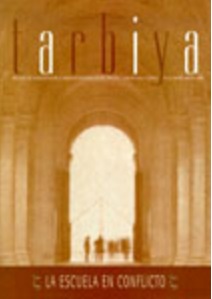Abstract
El conflicto parece ser una consecuencia natural de la interacción social, puede tener consecuencias positivas o negativas en función de cómo se gestione. Este trabajo revisa algunas de las propuestas actuales para la transformación constructiva de conflictos en contextos educativos.
Downloads
References
CASAMAYOR, G. (coord.). (1998). Cómo dar respuesta a los conflictos. La disciplina en la enseñanza secundaria. Barcelona: Graó.
CLEMENTE, M. Y VIDAL, M.A. (1994). La violencia simbólica: La televisión como medio generador de delincuencia en los niños. Apuntes de Psicología, 41-42, 47-60.
CLEMENTE, M. Y VIDAL, M.A. (1996). Violencia y televisión. Madrid: Noesis.
DEUTSCH, M. (1949). A theory of cooperation and competition. Human Relations, 2, 129-152.
DEUTSCH, M. (1973). The resolution of conflict. New Haven: Yale University Press.
DEUTSCH, M. (1994). Constructive conflict resolution: principles, training, and research. Journal of Social Issues, 50, 13-32.
DÍAZ AGUADO, M.J. (1994). Educación y desarrollo de la tolerancia. Programa para favorecer la interacción educativa en contextos étnicamente heterogéneos. Madrid: MEC.
DÍAZ AGUADO, M.J. (1997). Programa de educación para la tolerancia y prevención de la violencia en los jóvenes. Madrid: INJUVE-MEC (Cajas azules).
FERNÁNDEZ, I. (1998). Prevención de la violencia y resolución de conflictos. El clima escolar como factor de calidad. Madrid: Narcea.
JOHNSON, D.W., MARUYAMA, G., JOHNSON, R., NELSON, O. Y SKON, L. (1981). Effects of cooperative, competitive, and individualistic goal structures on achievement: A meta-analysis. Psychological Bulletin, 89, pp. 47-62.
JOHNSON, D.W. y JOHNSON, R. (1979). Conflict in the classroom: controversy and learning. Review of Educational Research, 49, 51-61.
JOHNSON, D.W. y JOHNSON, R. (1989). Cooperation and competition: Theory and research. Edina: Interaction book company.
JOHNSON, D.W. y JOHNSON, R. (1999). Cómo reducir la violencia en las escuelas. Buenos Aires: Paidós.
JOHNSON, D.W., JOHNSON, R., DUDLEY, B. y ACIKGOV, K. (1994). Effects of conflict resolution training on elementary school students. Journal of Social Psychology, 134 (6), 803-817.
LARA, F. (1991). Compensar educando. Madrid: Popular.
LIPMAN, M., SHARP, A.M. y OSCANYAN, F.S. (1992). La filosofía en el aula. Madrid: Ed. de la Torre.
NIJHOLF, W. y KOMMERS, P. (1985). An analysis of cooperation in relation to cognitive controversy. En Slavin y cols. (Eds.), Learning to cooperate, cooperating to learn, New York: Plenum Press.
OVEJERO, A. (1990). El aprendizaje cooperativo. Una alternativa eficaz a la enseñanza tradicional. Barcelona: PPU.
SANMARTÍN, J., GRISOLÍA, J.S. y GRISOLÍA, S. (1998). Violencia, televisión y cine. Barcelona: Ariel.
SHARAN, S. (1980). Cooperative learning in teams: Recent methods and effects on achievement, attitudes, and ethnic relations, Review of Educational Research, 50, 241-272.
SHERIF, M. (1966). Group Conflict and cooperation. Londres: Routledge.
SLAVIN, R.E. (1983). Cooperative learning. New York: Longman.
WEBB, N.M. (1985). Student interaction and learning in cooperative small groups : A research summary. En Slavin y cols. (Eds.), Learning to cooperate, cooperating to learn, New York: Plenum Press.

